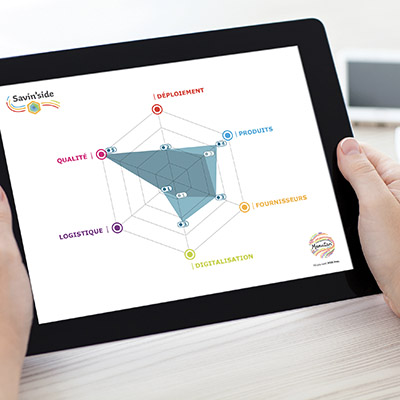Efficient supplier management is key to ensuring continuity and quality of operations within the supply chain. That's why it's important to implement a supplier evaluation and monitoring approach within companies. This analysis guarantees the quality of purchased products and services, as well as the smooth functioning of procurement processes. For this approach to add real value to your organisation, it must be carried out efficiently and thoughtfully, using a supplier form.
What is a supplier form?
A supplier form is a document that allows you to collect all the essential information about a supplier. Based on a standardised model, it can take the form of a typical file (Excel, PDF, Word...) or be integrated into your company's information system (ERP). This supplier form includes administrative and financial data, performance-related information, etc. It serves as a reference for all transactions and interactions with your supplier, thus facilitating relationship management and decision-making.
A form should be completed as soon as a new supplier is integrated into the portfolio or updated when certain data relating to an existing supplier changes. This is what allows you to build a solid supplier database.
A closer look at our supplier form template
In the supplier form template we offer, you'll find all the key supplier information, including:
- The company logo;
- Company identity (name, nationality, head office address, identifier);
- Contact person and their details;
- Product category concerned;
- Generic company information (workforce and turnover for the last fiscal year);
- Total expenditure for the current year and previous years;
- This supplier's market share for a given product category;
- Rating grid (from 1 to 5) for product quality, delivery quality, and innovation;
- Additional information such as effective digitalisation of transactions and the existence of CSR certification (EcoVadis, ISO 26000...).
Some dedicated software will even add many other details to the supplier form, such as:
- Website;
- Currency;
- VAT;
- Invoicing and payment method;
- Last order;
- Current orders;
- Various contacts within the company...
By collecting all this information, companies can ensure that the partners they work with, or potential suppliers they wish to work with in the future, meet their needs and requirements.
Moreover, the selected indicators (market share, product and delivery quality, innovation...) aim to measure the quality of professional services of all suppliers through a common framework. It is with this key information that companies will be able to make the best decisions.
The supplier form, serving better overall management
The whole point of this approach is to build your supplier database using these new supplier forms. Such a supplier file ensures the integrity, security, and accessibility of all this data. This facilitates exchanges, spend analysis, receipt and list of supplier invoice payments...
Thanks to such a centralised data repository, companies can also efficiently manage their supplier portfolio. The starting point for this approach, if not already done, is to segment your supplier panel. Many buyers rely on the Kraljic Matrix to carry out this exercise. This method of classifying and analysing the procurement portfolio is based on the strategic importance of the product and the complexity of the supplier market.
Over time, experts have taken into account other dimensions such as interdependence or the customer-supplier relationship, for example. Today, each company has its own method for analysing and segmenting its supplier portfolio. Some will integrate supplier performance, strategic importance...
This work allows you to identify different typologies in your supplier list: strategic suppliers, preferred, accepted, new, dormant, conditional, rejected... Then associate objectives and action plans adapted to each. For example, companies will focus on building loyalty and accelerating innovation with their strategic suppliers, dynamically managing contracts with preferred suppliers, and engaging in a rationalisation approach for dormant or rejected suppliers.
The example of supplier rationalisation
Let's take the concrete example of a buyer in charge of long tail spend. During annual performance reviews, the buyer carefully studies each supplier form objectively. They will be particularly interested in the expenditure evolution over past years, as well as market shares and performance levels in terms of product and delivery quality.
If several of these data points are sharply declining for a pool of suppliers positioned in the same product category, it may be a sign that they should be substituted in favour of a supplier that has already been identified as preferred.
Quentin Burès, Head of Procurement Optimisation and Digitalisation, emphasises: "When we know that long tail spend accounts for 75% of the number of suppliers within procurement departments, such a project makes perfect sense. Above all, it allows us to reduce administrative costs. This includes supplier management costs, estimated at an average of €1,000 (around £850) per supplier per year, as well as transaction costs evaluated between €19 (around £16) and €95 (around £80) per transaction, depending on the level of digitalisation[1]. Besides these savings, it will contribute to improving team productivity and strengthening this strategic partnership."
Thanks to the supplier form system, companies are able to create a central repository containing all relevant information about their suppliers. This tool offers them tremendous visibility and paves the way for informed decision-making. It is by analysing data accurately that companies will be able to select the service providers that best meet their needs. To build lasting supplier relationships, procurement departments must thus focus on regular evaluation and monitoring of their partners, in a continuous improvement approach.
[1] Manutan Group, internal data









